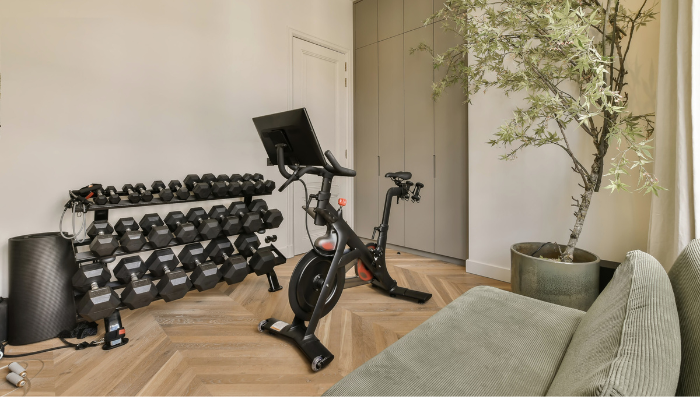Protect Your Home Gym: The Importance of Fitness Protection Plans
So, you’ve done it. You’ve finally turned that cluttered corner of your basement into the home gym of your dreams. There’s the sleek treadmill (hello, marathon goals), the stationary bike that’s become your morning cardio buddy, and maybe even that elliptical you snagged on sale because, why not?
But now that you've invested some serious cash into all this shiny equipment, there’s a question you might not be asking yourself—what happens if something breaks?
Let’s be real: fitness equipment isn’t cheap. A solid treadmill can set you back $1,000 to $3,000. You’re in this for the long haul, but here’s a reality check—your treadmill doesn’t care about your marathon dreams, and your bike isn’t as dedicated to your fitness journey as you are. Machines break. Things happen. And when they do, it can hurt much more than missing leg day.

Home Gyms: A Trend That’s Not Going Away
The pandemic redefined fitness for a lot of people, and the trend of home gyms shows no sign of slowing down. In fact the home gym equipment market is expected to grow 8.7% per year, with a projected market value of $96.6 billion by the end of 2024.
People are ditching crowded gyms for the convenience of their own personalized workout space, meaning more households now own pricey equipment that needs to be taken care of.
Whether you’re an occasional treadmill walker or hardcore weightlifter, these machines are your personal trainers—without the judgmental looks.
But here’s the thing: your gym equipment is like a car. Just like you’d buy insurance for your car, you should probably think about protecting that expensive machinery that keeps you moving.

Why a Fitness Protection Plan Matters
Let’s face it, even the best machines can wear down, especially when they’re in daily rotation. And when they do, the costs can sneak up on you. Take a broken treadmill motor, for instance—that’s a $300 to $600 repair right there.
And trust me, home fitness equipment repair isn’t exactly a DIY project. Sure, you could try Googling how to fix a treadmill belt, but unless you're part-time mechanical engineer, chances are you’ll end up staring at it like a caveman discovering fire for the first time. Plus, you will most likely be voiding your protection plan / extended warranty if you try to do any repairs yourself.

The Peace of Mind a Protection Plan Brings
This is where the beauty of a good warranty comes in. Think of it like this: a protection plan is a promise that if your elliptical’s resistance goes rogue or your treadmill starts sounding like a dying robot, you won’t be on the hook for scheduling a repair and covering the repair costs.
A decent protection plan typically covers key components—like motors, frames, and electronics—so you can keep using your equipment without spending excessively. Most fitness equipment comes with a manufacturer’s warranty, but those usually last just a year or two, and they’re often limited to certain parts.
And let’s be honest—things don’t always fall apart until after the standard warranty expires. That’s why many people opt for protection plans to make sure their gear stays protected long-term.

Protecting Your Fitness Journey
Think about it: you didn’t just buy a treadmill—you bought into a healthier lifestyle, a personal commitment to yourself. That equipment? It’s the bridge between you and your goals. Keeping it in top shape is a priority, not a luxury.
If something breaks, the last thing you want is to feel like you’ve wasted your investment or—worse—lose the momentum you’ve been building. A protection plan ensures that when your treadmill stutters, your fitness journey doesn’t.
So, after you’re done setting your PR on the bike or finishing your 5k on the treadmill, give some thought to that unsung hero—the warranty. It’s the behind-the-scenes player that’ll keep you running, biking, and training without a hitch.
And trust me, your future self (and your wallet) will thank you.








.png)